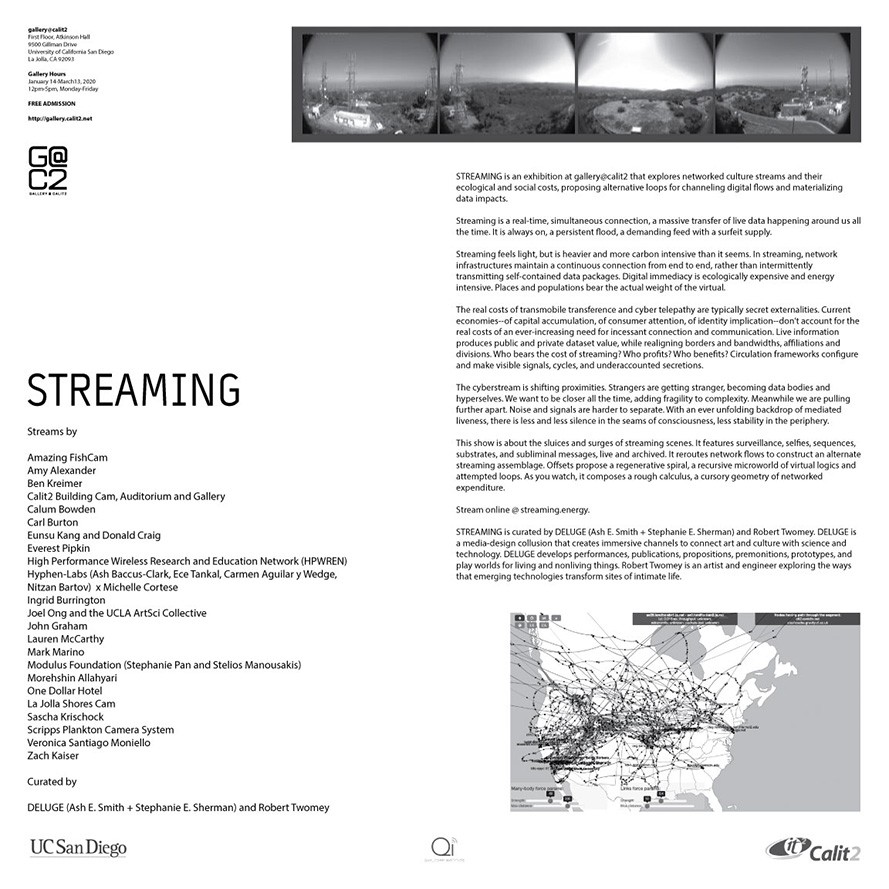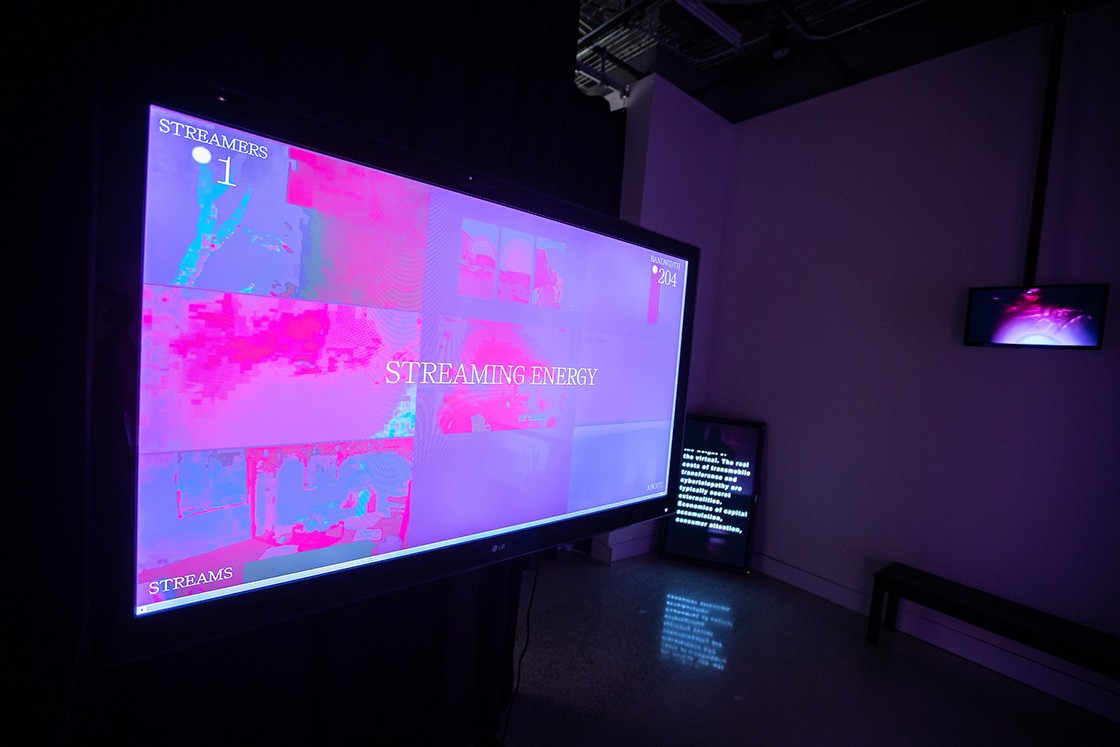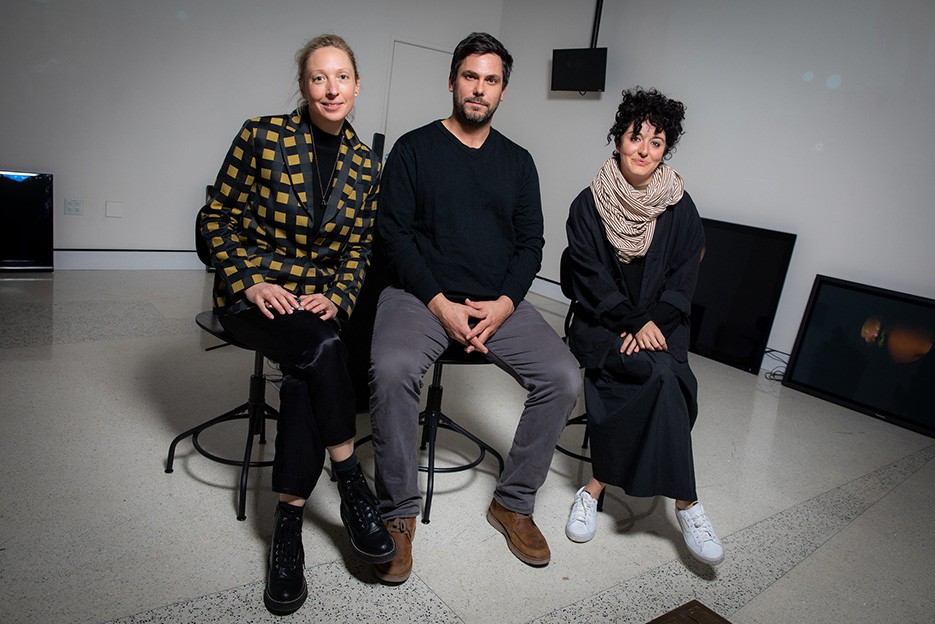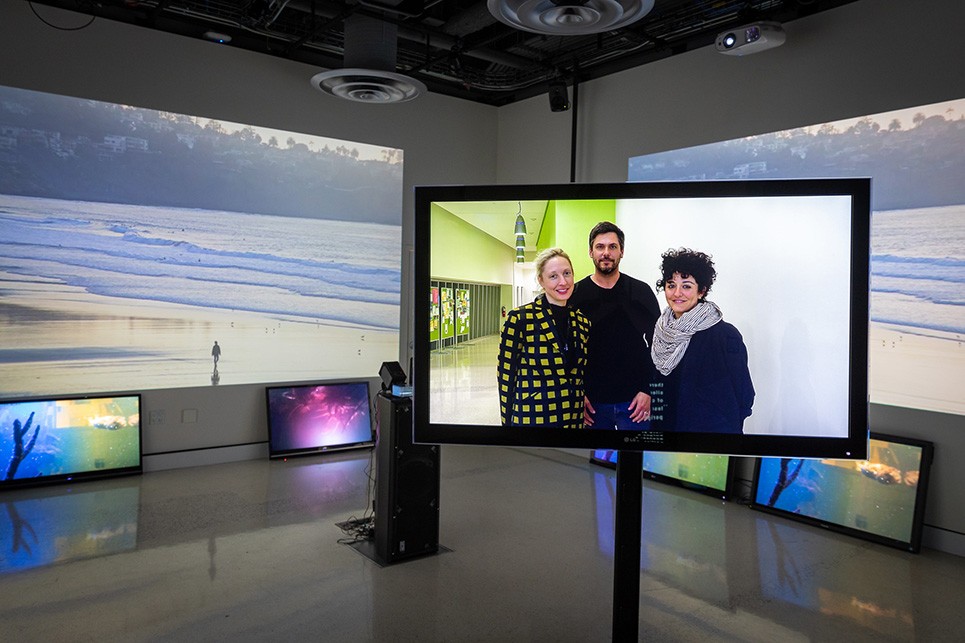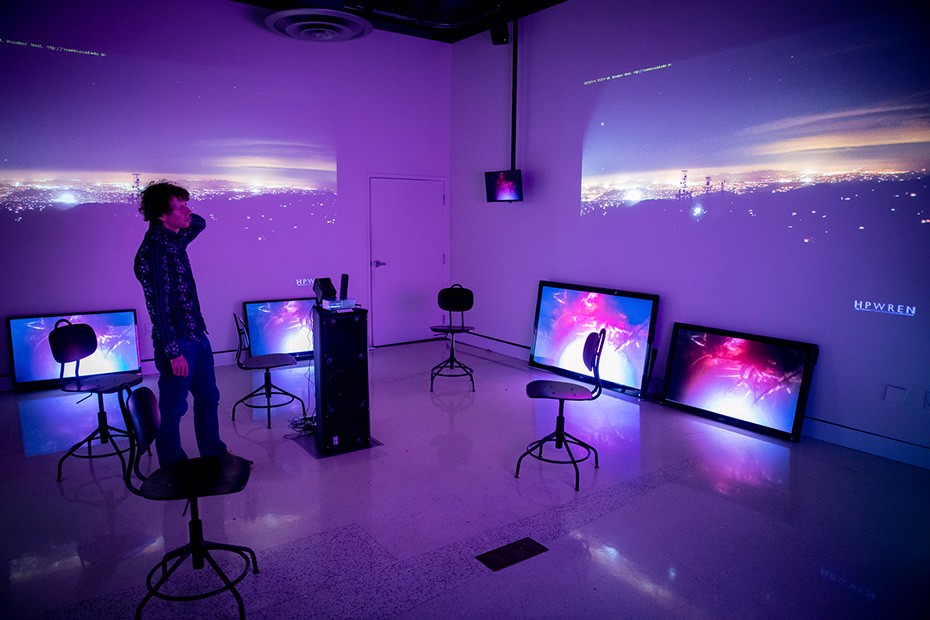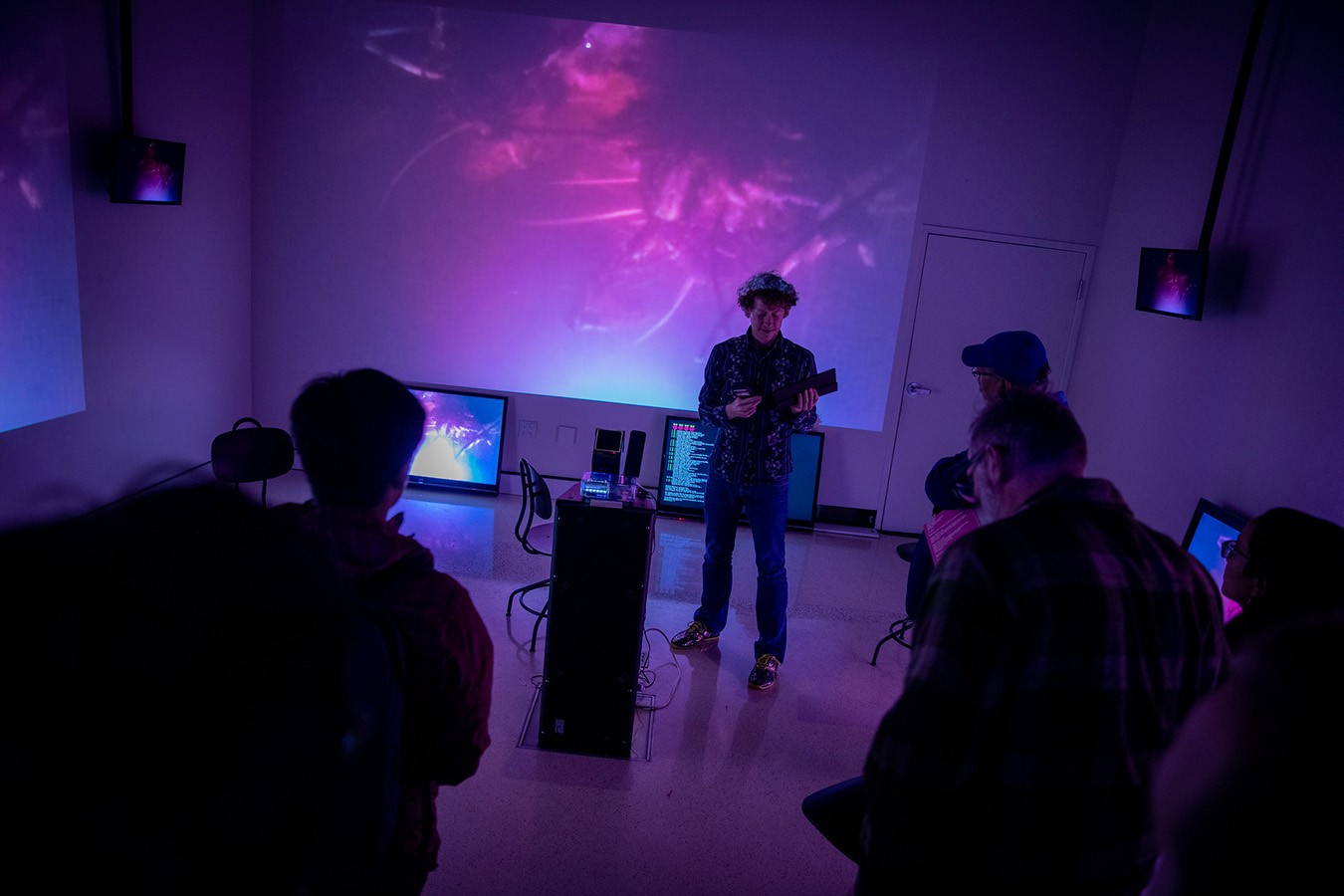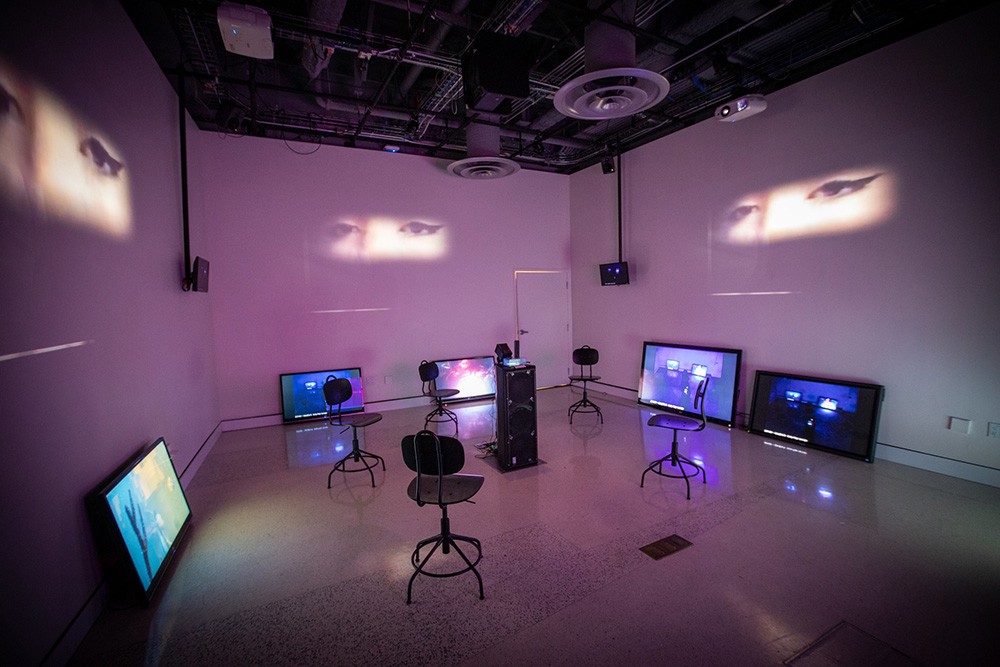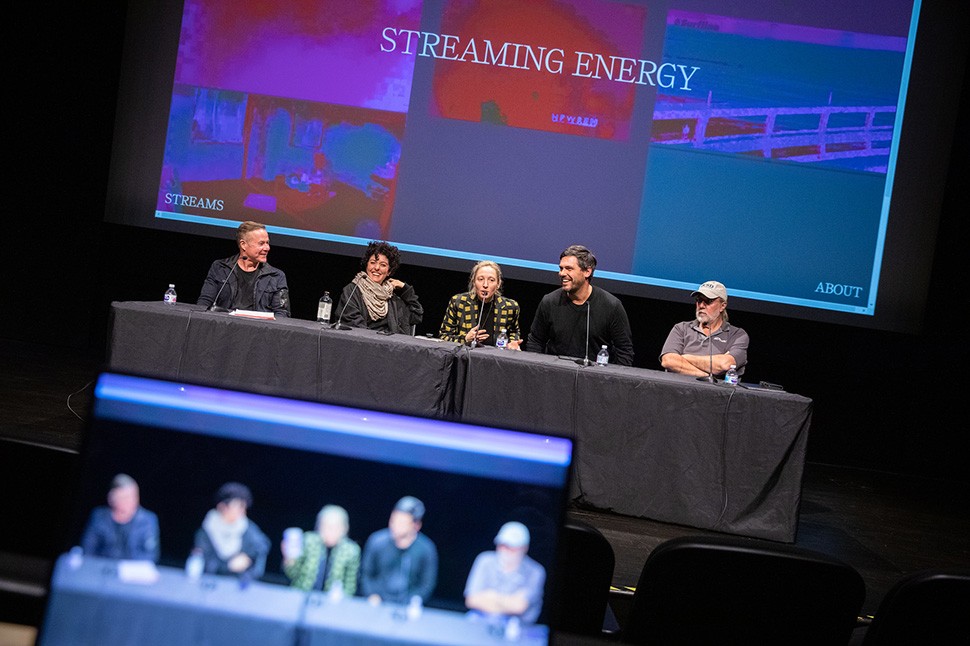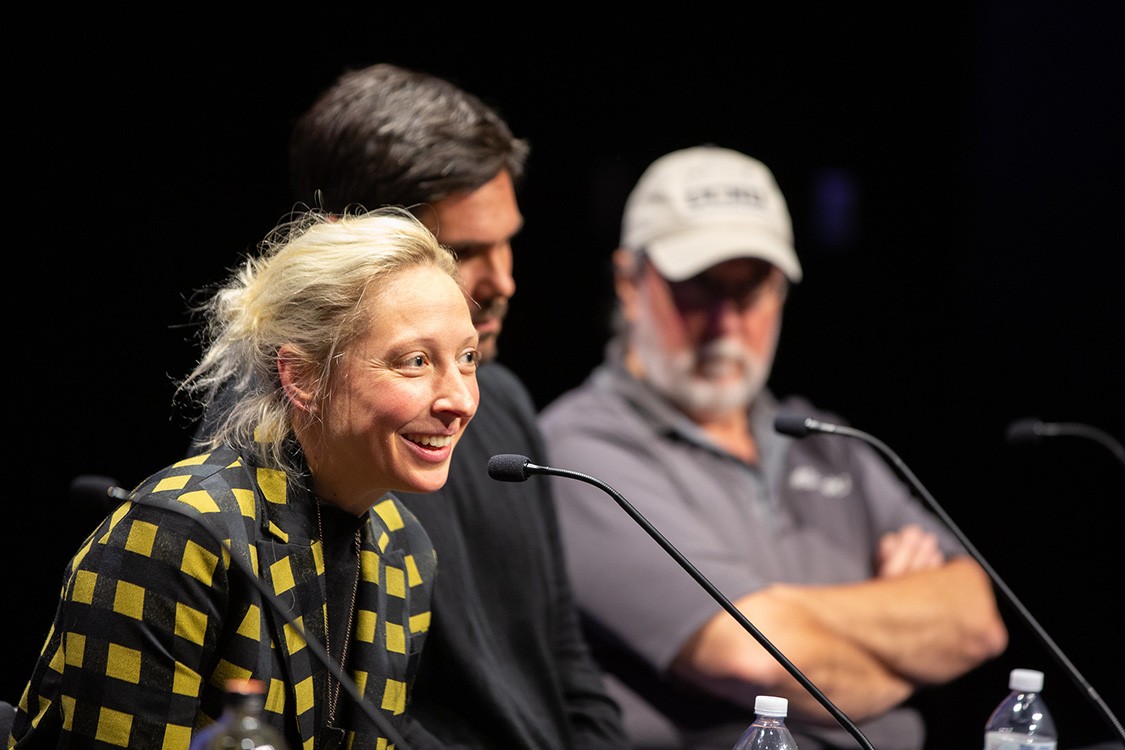Streaming
Gallery@Cali2 @ UC San Diego Qualcomm Institute
January 14-March 13 2020
Link to: STREAMING ENERGY
STREAMING is a research platform and exhibition at gallery@calit2 at UC San Diego’s Calit2 Qualcomm Institute that considers the ecological and social impacts of networked culture streams and the possibilities and limits for their calculation.
Streaming is about the physical internet. Streaming is a real-time, simultaneous, massive transfer of live data happening around us all the time. Streaming seems light, but is heavier and more carbon-intensive than it appears. During streaming, network infrastructures maintain a continuous, live connection from end to end rather than intermittently transmitting self-contained data packages. This digital immediacy is ecologically expensive and energy-intensive. Current economies of capital accumulation, consumer attention, and identity exhibitionism don’t account for the real costs of an ever-increasing need for incessant communication. Places and populations bear the actual weight of the virtual.
The streams featured in the STREAMING exhibition consider encounters with intimate and expanded infrastructures-- from the capture of environments and ecologies to the social and cultural reverberations of streaming systems. STREAMING features streaming scenes: surveillance, selfies, substrates, and subliminal messages that pass across the internet, digital and physical, live and archived. These streams are amalgamated into an alternate network assemblage, a rough calculus and a cursory geometry of a networked expenditure. Offsets complete this regenerative spiral.
Featured public live streams include the Amazing FishCam, the second-ever Livestream initiated by a Netscape team. The Calit2 Building Cam of the Auditorium and Gallery streams the visitors attending the Streaming show. The One Dollar Hotel in Fukuoka Japan records visitors who stay overnight in a Ryokan outfitted with a webcam. La Jolla’s Surf Cam captures tides and surfers on the beach proximate to UCSD. Networked research from San Diego’s Calit2 also features The High-Performance Wireless Research and Education Network (HPWREN) which displays webcams of sites in San Diego county underserved by traditional internet infrastructures and the Scripps Plankton Camera System, which displays underwater organisms for real-time research processing. Project Sycamore depicts flyover drone capture of Apple data centers and solar farms in Maiden, NC.
Featured streams from artists and cultural producers present ways to interpret the loops between these digital, virtual, and physical worlds. Ben Kreimer’s Pipelines sonifies Wifi, Bluetooth and cellular frequencies in the gallery, modulating according to visitor activity. Calum Bowden’s Biological Computer constructs a microcosmic biome and data loop, a micro-ecosystem affected by streamers of the live feed. Carl Burton’s Islands: Non-Places Lobby depicts an anthropogenic hotel lobby that adapts to regular flooding to develop an intertidal ecosystem. Eunsu Kang and Donald Craig’s Streaming Fauna speculates on a new branch of a family tree evolving from Aural Fauna, an unknown organism imagined by AI that lives in the streamed space between network nodes. Ingrid Burrington’s Everything Has a Resonant Frequency is a performative essay that addresses healing crystals, mineralogical foundations of computing, and the overlaps between the two. Lauren Lee McCarthy’s SOMEONE records a smart home experience that replacing virtual assistants with remote human operators. Hyphen Lab’s Ruby Cam reimagines user-controlled wearable surveillance systems as a means for protective and deflective video capture. ScreenSaver Collection by Everest Pipkin offers non-repeating and predictable screensaver landscapes of 24-hour water, plants and lights (stage), type 2 barricades, jewel box, work lights, and Monopines Cell Tower. Other participants in the show include Joel Ong and the UCLA ArtSci Collective, the Modulus Foundation (Stephanie Pan and Stelios Manousakis), Full description of all Streams here.
These streams provide a trove of data that is then calculated via an interface developed by the Pacific Research Platform, which calculates the carbon impact of the exhibition to the fullest extent possible. Led by researcher John Graham, the PRP will use the show’s amalgam of cultural data to integrate calculations that convert bandwidth consumption and website visitors to CPUs.The Pacific Research Platform (http://pacificresearchplatform.org/) is, a partnership of more than 50 institutions, led by researchers at UC San Diego and UC Berkeley and includes the National Science Foundation, Department of Energy, and multiple research universities in the US and around the world. The PRP builds on the optical backbone of Pacific Wave, a joint project of CENIC and the Pacific Northwest GigaPOP (PNWGP) to create a seamless research platform that encourages collaboration on a broad range of data-intensive fields and projects.
Running from January 14th through March 13th, STREAMING is open to the public weekdays from 12:00 pm-5:00 pm, and online at streaming.energy. There are three programs associated with the exhibition: an opening and curators roundtable on Jan 14th from 5-7 pm, a gallery walkthrough on Friday, February 7th as part of the Cultured Data Symposium (cultureddata.net), and a streamed conversation with commissioned artist Calum Bowden on Thursday, March 12th at 5 pm at 5-7 pm PST. STREAMING is curated by DELUGE (a media-design, art-culture, tech-science collusion of Ash E. Smith + Stephanie E. Sherman) with artist and engineer Robert Twomey.
Special thanks to the Pacific Research Platform (John Graham, Joel Polizzi and Isaac Nealey), for visualization, software engineering, technics, and development; Hector Bracho and Ruben Huerta, Alex Matthews and Trish Stone for their work with the gallery preparations and curation.
